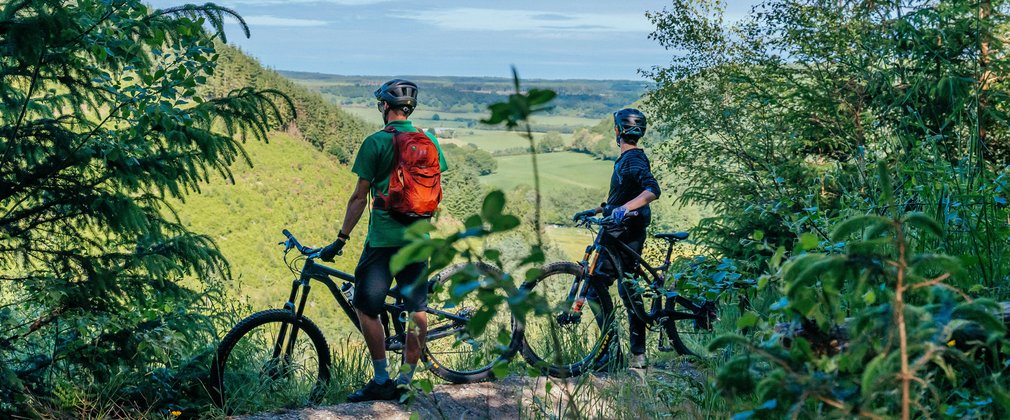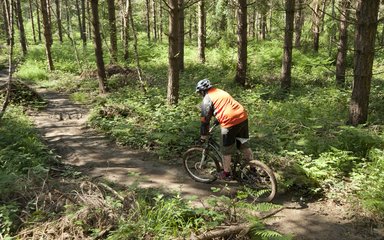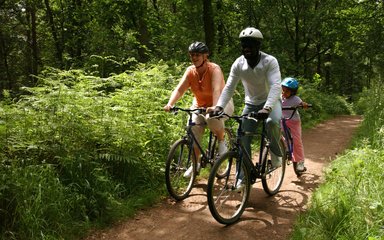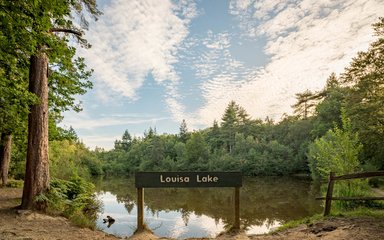
Staying safe on your bike
With over 2,500 km of cycling trails, from gentle family routes to bike skills areas and adrenaline-fuelled downhill MTB, Forestry England have trails for everyone.
Before you begin your cycling adventure with us, plan your ride through the forest in safety.
How our cycling trails are graded
Our waymarked trails are graded, so whatever your ability, you can find a trail that’s right for you. Read the cycle trail grading page for more information.
Cycling safely
Follow these tips to enjoy a safe ride:
Plan ahead
- Use the right bike and appropriate safety gear, and check they’re safe to use. Always wear a helmet and gloves.
- Don’t rely on others; make sure you can get back safely.
- Know your location if you need to call for help.
Stay in control
- Ride within your ability.
- Look first: only tackle jumps and other challenges if you’re sure you can do them.
- Expect the unexpected.
- Off-road cycling carries inherent risks. Consider your skills, ability, and fitness, and use these guidelines in conjunction with your own experience and careful judgement.
Ride responsibly
- Take care around other visitors, dogs and horses.
- Dogs are not allowed on cycle trails, except for shared use trails.
- Motorbikes and quadbikes are not allowed.
- Routes may change due to forestry work. Follow all warning signs and diversions.
- If a vehicle is loading timber, always wait for the driver to let you past.
In an emergency
In an emergency, dial 999. Once you are safe, please let the local forest centre know by telephone. You can find contact details for each forest online.



